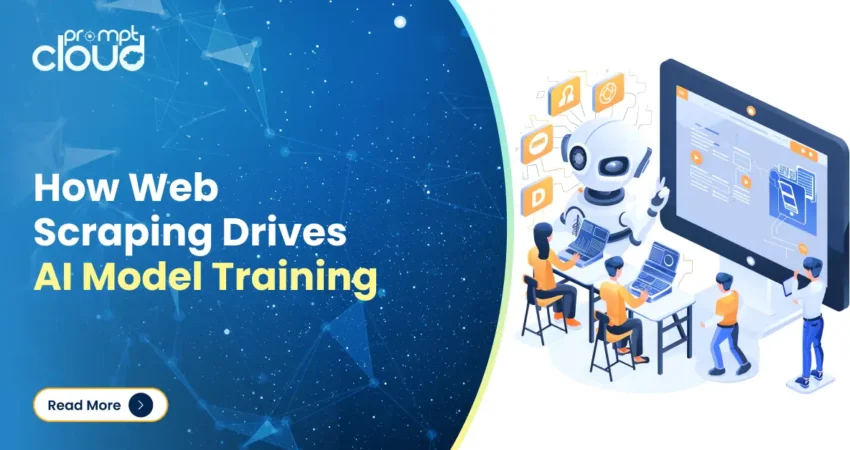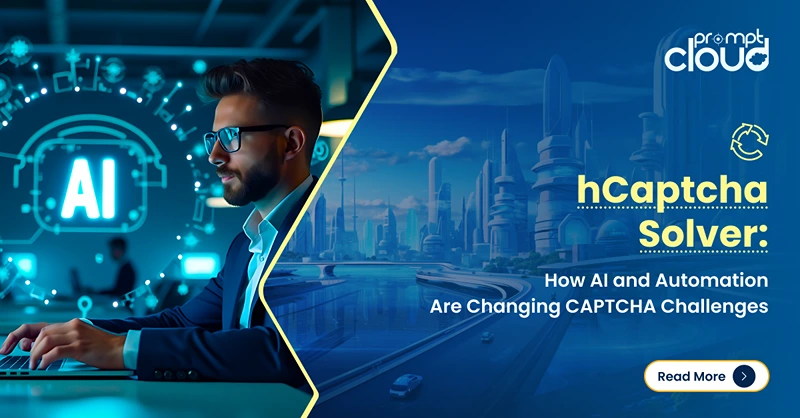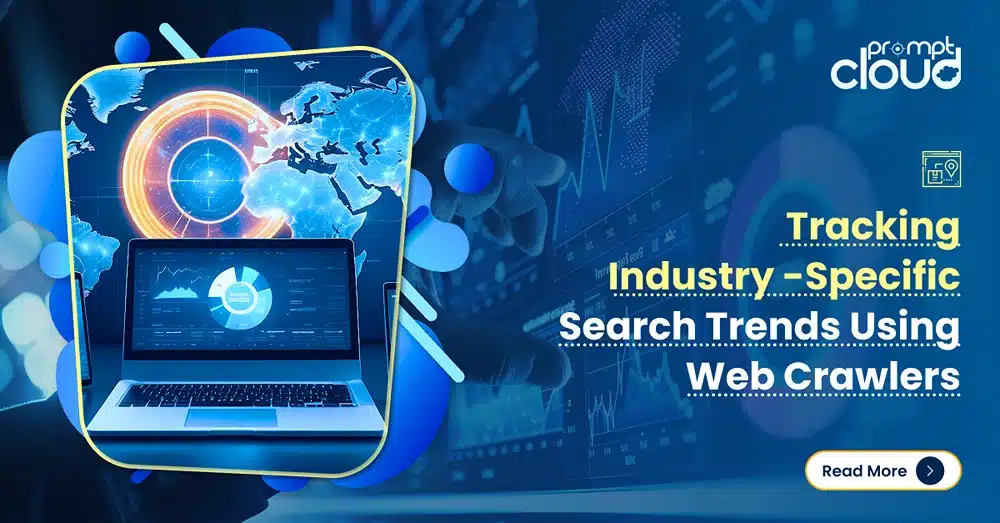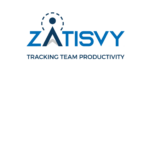
Artificial Intelligence (AI) is only as good as the data that powers it. The development and performance of AI models hinge on the quality, diversity, and relevance of their training data. However, sourcing this data – especially at the scale required for sophisticated AI applications – presents a significant challenge. This is where web scraping becomes invaluable, providing a scalable, efficient way to collect the data needed for AI model training.
Let’s explore how web scraping supports AI model development and why it’s an essential component for businesses leveraging AI.
Why Data is the Foundation of AI Model Training?
AI models rely on vast datasets to identify patterns, learn decision-making processes, and improve their accuracy over time. Whether it’s a chatbot learning conversational nuances, a recommendation system predicting user preferences, or a vision model recognizing objects, the data used in training directly impacts an AI model’s performance.
Key Attributes of Data for AI Model Training:
- Diversity: AI needs varied datasets to understand multiple scenarios and reduce bias.
- Volume: High volumes of data are essential to ensure robust learning.
- Relevance: The data must align with the specific task or domain the AI is designed for.
- Freshness: Outdated data can render AI models less effective in dynamic environments.
Web scraping meets these demands by automating the collection of structured and unstructured data from online sources, providing the perfect input for AI model training.
How Web Scraping Enhances AI Model Training?
Web scraping enables businesses to extract large-scale, real-world data from various sources such as websites, e-commerce platforms, social media, and more. Here’s how this process drives the training of AI models:

1. Diverse and Realistic Training Data
AI models perform better when trained on data that represents real-world scenarios.
- E-commerce Scraping: Collect product descriptions, pricing, and customer reviews to train recommendation systems.
- Social Media Scraping: Extract posts and comments for sentiment analysis and natural language processing (NLP) models.
- Geospatial Data Scraping: Gather map and location data for AI in navigation and logistics applications.
By pulling data from diverse online sources, web scraping ensures your AI models are exposed to a wide range of inputs, making them robust and adaptable.
2. Large-Scale Data Collection
The scale of data required for AI model training can be staggering. Traditional methods of gathering data are often too slow or inefficient.
- Web scraping automates the process, allowing businesses to collect millions of data points in a fraction of the time.
- Parallel processing techniques enable the scraping of multiple websites simultaneously, meeting the volume demands of advanced AI applications.
For example, a language model like GPT requires billions of text samples. Web scraping provides the infrastructure to gather this data quickly and efficiently.
3. Domain-Specific Datasets
AI models designed for specific industries need domain-specific data. Web scraping allows businesses to:
- Collect financial data for AI models predicting stock market trends.
- Extract medical research and reports for training healthcare diagnostic AI.
- Scrape legal documents to train AI in contract analysis or compliance monitoring.
Customized scraping pipelines ensure that the data collected aligns perfectly with the AI’s intended application.
4. Dynamic and Real-Time Data
Static datasets can make AI models obsolete in fast-changing environments. Web scraping enables:
- Real-Time Updates: Collecting data on pricing, trends, or user behavior as it happens, keeping AI models relevant.
- Event-Triggered Scraping: Automatically extracting data when predefined events occur, such as a product launch or breaking news.
This dynamic data is especially critical for AI applications in e-commerce, stock trading, and digital marketing, where market conditions evolve rapidly.
5. Overcoming Data Scarcity Challenges
In some cases, publicly available datasets may not cover niche domains or specialized use cases. Web scraping can fill this gap by targeting specific websites or sources.
- For instance, scraping job boards can provide data for AI models focused on talent matching and HR automation.
- Scraping academic articles can train AI in academic research tools.
By tailoring the scraping process, businesses can acquire the exact data they need for effective AI model training.
What are the Benefits of Web Scraping for AI Model Training?
Using web scraping to gather training data offers several advantages:
1. Cost Efficiency:
Manual data collection can be resource-intensive and expensive. Web scraping automates the process, reducing the time and cost associated with large-scale data gathering.
2. Scalability:
Whether you need data from 10 websites or 1,000, web scraping scales effortlessly to meet your project’s requirements.
3. Customization:
Scraping pipelines can be designed to target specific data points, ensuring relevance to your AI model’s objectives.
4. Data Freshness:
Regular scraping schedules ensure your training datasets are always up to date, enhancing the accuracy and reliability of your AI models.
5. Actionable Insights:
The data collected via web scraping isn’t just for training – it can also provide insights into customer behavior, market trends, and competitor strategies.
Real-World Applications of Web Scraping for AI Model Training

1. Chatbots and Virtual Assistants
- Data Source: Social media, FAQs, and support tickets.
- Goal: Train AI to respond conversationally and resolve queries effectively.
2. Recommendation Systems
- Data Source: E-commerce platforms, user reviews, and purchase histories.
- Goal: Predict customer preferences and enhance personalization.
3. Fraud Detection
- Data Source: Transaction records and behavior analytics from financial websites.
- Goal: Train AI to identify anomalies and detect fraudulent activities.
4. Image and Video Recognition
- Data Source: Multimedia platforms and image libraries.
- Goal: Train AI for applications like facial recognition, quality control, or medical imaging.
5. Sentiment Analysis
- Data Source: Social media posts, news articles, and forums.
- Goal: Train AI to understand and analyze public sentiment.
How PromptCloud Enhances AI Model Training Through Web Scraping?
At PromptCloud, we specialize in delivering tailored web scraping solutions designed to support AI model training. Our services include:
- Customized Data Pipelines: Extracting data specific to your AI project’s needs.
- Scalable Solutions: Collecting large volumes of data from diverse sources.
- Real-Time Updates: Ensuring your datasets remain relevant and up to date.
- Compliance Assurance: Adhering to ethical and legal standards for data collection.
Whether you’re training an NLP model, building a recommendation system, or developing AI for visual recognition, PromptCloud provides the tools and expertise to fuel your success.
Conclusion:
As AI continues to revolutionize industries, the importance of high-quality training data cannot be overstated. Web scraping bridges the gap between the vast amounts of information available online and the data needs of AI developers. By automating the collection of diverse, dynamic, and domain-specific datasets, web scraping ensures that AI models are equipped to excel in real-world applications.Are you ready to elevate your AI models with robust, scalable data solutions? Let PromptCloud help you harness the power of web scraping for superior AI model training. Get Started today!
Frequently Asked Questions
What is an AI training model?
An AI training model is a mathematical framework or algorithm that is trained to make decisions, predictions, or perform tasks based on input data. It serves as the foundation for artificial intelligence applications, learning patterns and relationships in the data to produce accurate and meaningful outputs.
The training process involves feeding the model large volumes of labeled or unlabeled data, which it uses to adjust its internal parameters. Over time, the model improves its understanding of the task, whether it’s recognizing images, processing natural language, predicting trends, or even personalizing user experiences.
Different types of AI training models include supervised learning, unsupervised learning, and reinforcement learning, each suited for specific use cases. With high-quality data (like that collected through web scraping), AI models can be fine-tuned to meet precise business needs.
How to train AI model step by step?
Training an AI model involves a systematic process to ensure it learns effectively from data and delivers accurate results. Here’s a step-by-step overview:
- Define the Objective
Clearly outline what you want the AI model to achieve, such as predicting trends, classifying images, or analyzing text. - Gather and Prepare Data
Collect relevant and high-quality data. This could be structured (like spreadsheets) or unstructured (like text or images). Clean and preprocess the data to remove errors, fill gaps, and normalize formats. - Choose the Model Architecture
Select an appropriate algorithm or architecture based on your task. For instance, neural networks for deep learning tasks, decision trees for classification, or clustering models for unsupervised learning. - Split the Data
Divide your dataset into training, validation, and testing subsets. The training set is used to teach the model, the validation set helps tune it, and the test set evaluates its performance. - Train the Model
Feed the training data into the model, allowing it to learn patterns and relationships. This step involves multiple iterations, called epochs, where the model continually refines its predictions. - Validate and Tune the Model
Use the validation data to check how well the model generalizes to unseen data. Fine-tune hyperparameters (e.g., learning rate, batch size) to optimize performance. - Evaluate the Model
Test the model on the testing data to assess its accuracy and effectiveness. Metrics like precision, recall, and F1 score help quantify performance. - Deploy and Monitor
Once satisfied, deploy the model to production. Continuously monitor its performance, as real-world data can differ from training data, requiring retraining or adjustments.
With these steps, businesses can create AI models tailored to specific needs, ensuring meaningful and actionable results.
How to learn AI modelling?
Learning AI modeling involves a combination of theoretical understanding and practical experience. Here’s a step-by-step approach:
- Build a Strong Foundation in Math and Programming
AI modeling requires knowledge of linear algebra, calculus, probability, and statistics. Familiarity with programming languages like Python is essential, as it’s widely used in AI development. - Understand Machine Learning Concepts
Learn the basics of machine learning, such as supervised learning, unsupervised learning, reinforcement learning, and deep learning. Online courses, tutorials, and books are great starting points. - Explore AI Frameworks and Libraries
Get hands-on experience with popular AI frameworks like TensorFlow, PyTorch, and Scikit-learn. These tools simplify model building and experimentation. - Work on Real-World Datasets
Practice by working with publicly available datasets from sources like Kaggle or UCI Machine Learning Repository. This helps you understand how to preprocess data and apply models. - Learn to Train and Evaluate Models
Study how to split datasets, train models, tune hyperparameters, and evaluate performance using metrics like accuracy, precision, recall, and F1 score. - Deepen Knowledge with Advanced Topics
Explore advanced areas like neural networks, natural language processing (NLP), computer vision, and generative AI to expand your skills. - Build Projects
Create your own AI models for practical applications, such as recommendation systems, sentiment analysis, or predictive analytics. This reinforces learning and helps build a portfolio. - Engage with the AI Community
Join forums, attend webinars, and participate in hackathons to stay updated on the latest trends and gain insights from experts. - Stay Curious and Keep Learning
AI is a fast-evolving field. Continuously explore new research papers, tools, and techniques to refine your knowledge and expertise.
By following these steps, you can progressively develop the skills needed to excel in AI modeling and apply them effectively in various domains.
What is the best AI model to train?
Selecting the optimal AI model for training depends on your specific task, the nature of your data, and the resources at your disposal. Here’s a concise guide to help you make an informed decision:
- Define Your Objective: Identify the problem you’re addressing—be it image classification, natural language processing, predictive analytics, etc. This clarity will guide your model selection.
- Assess Data Availability: The volume and quality of your data are crucial. Some models, like deep neural networks, require extensive datasets, while others, such as decision trees, can perform well with less data.
- Consider Model Complexity: Balance the complexity of the model with interpretability and computational resources. For instance, while deep learning models can capture intricate patterns, they demand significant computational power and are less interpretable than simpler models like linear regression.
- Evaluate Resources: Ensure you have the necessary computational power and expertise. Training large models like OpenAI’s GPT-3 can be resource-intensive, requiring substantial hardware and financial investment.
- Experiment and Iterate: It’s often beneficial to start with simpler models to establish a performance baseline. You can then experiment with more complex architectures, using cross-validation to assess and compare their effectiveness.
In summary, there’s no one-size-fits-all “best” AI model. The ideal choice aligns with your specific objectives, data characteristics, and available resources. A thoughtful, iterative approach to model selection and training will yield the most effective results.
How do you train for AI?
Training for AI involves a systematic process of acquiring knowledge, developing skills, and gaining practical experience. Here’s how you can prepare yourself to work in the field of AI:
- Build a Strong Foundation
- Mathematics: Master linear algebra, calculus, probability, and statistics, as they are essential for understanding AI algorithms.
- Programming: Learn programming languages like Python, which is widely used for AI development. Familiarity with libraries such as NumPy, Pandas, and Matplotlib is also crucial.
- Learn the Basics of Machine Learning
- Understand the core concepts of machine learning, including supervised, unsupervised, and reinforcement learning.
- Explore algorithms like linear regression, decision trees, support vector machines, and neural networks.
- Familiarize Yourself with AI Frameworks
- Gain hands-on experience with AI frameworks like TensorFlow, PyTorch, Scikit-learn, and Keras. These tools simplify the process of building and training AI models.
- Work with Real-World Data
- Practice handling and preprocessing real-world datasets.
- Learn techniques like data cleaning, normalization, and feature engineering to prepare data for training models.
- Build and Train Models
- Start by creating simple models for tasks like classification or regression.
- Progress to more complex architectures like convolutional neural networks (CNNs) for image recognition or recurrent neural networks (RNNs) for time-series data.
- Experiment with Projects
- Apply your knowledge to real-world problems. Build AI models for tasks like chatbots, recommendation systems, or sentiment analysis.
- These projects help solidify your skills and build a portfolio for future opportunities.
- Stay Updated with Industry Trends
- Follow research papers, AI blogs, and online communities to stay informed about the latest advancements.
- Platforms like GitHub, Kaggle, and Stack Overflow are great resources for learning and collaboration.
- Take Online Courses and Certifications
- Enroll in AI-focused programs on platforms like Coursera, Udemy, or edX.
- Certifications from institutions like Google, AWS, and Microsoft can enhance your credentials.
- Practice, Iterate, and Learn Continuously
- AI is an evolving field, so constant learning and adaptation are crucial. Experiment, fail, and refine your understanding over time.





















































